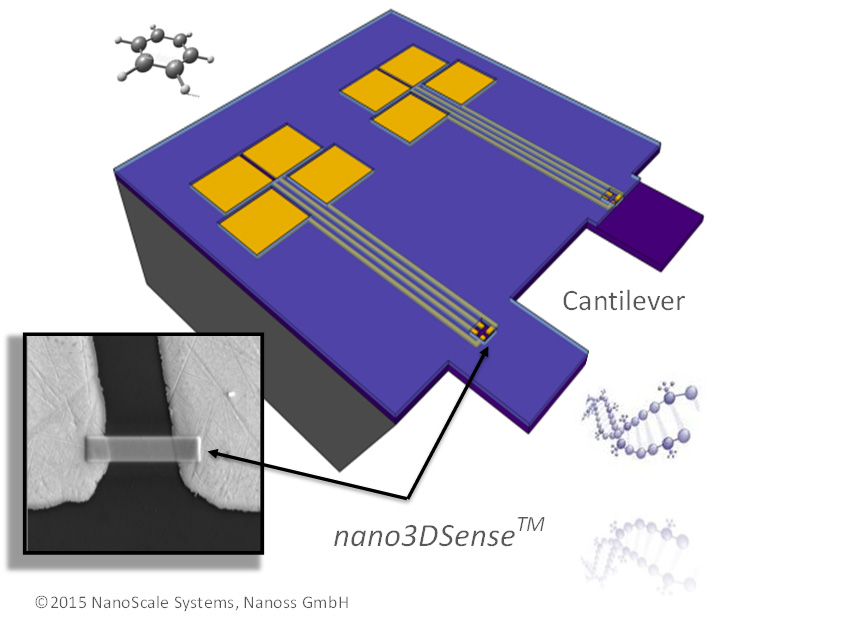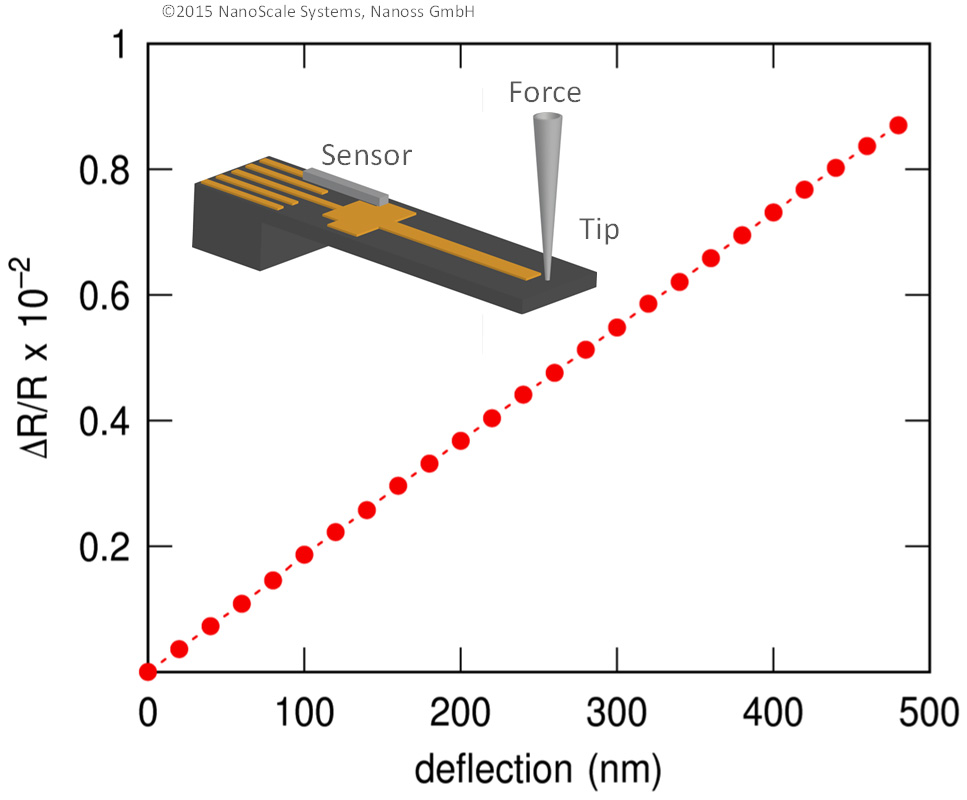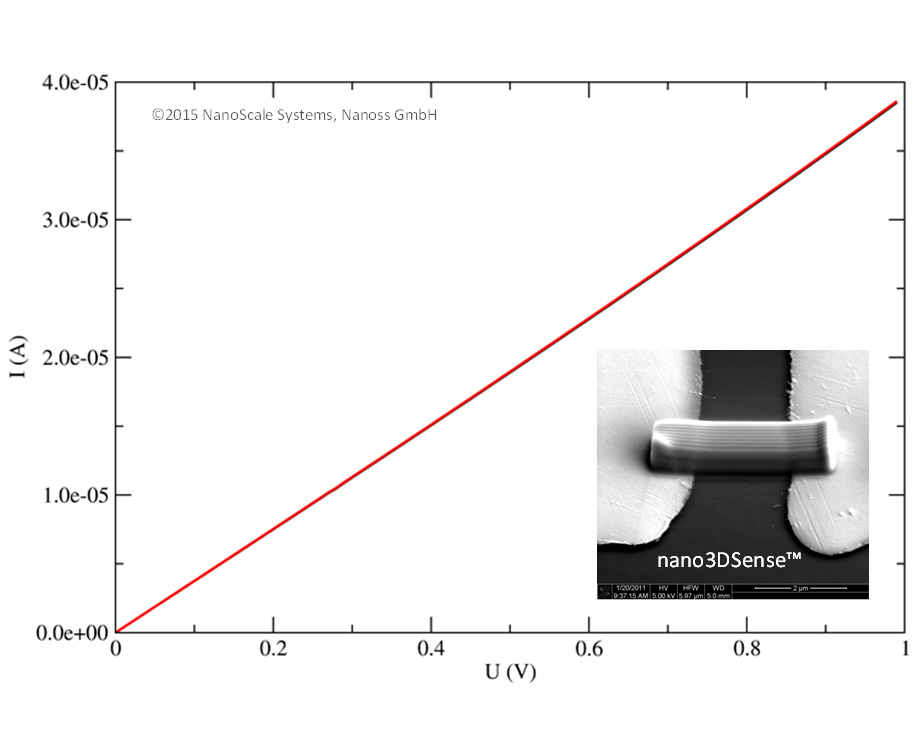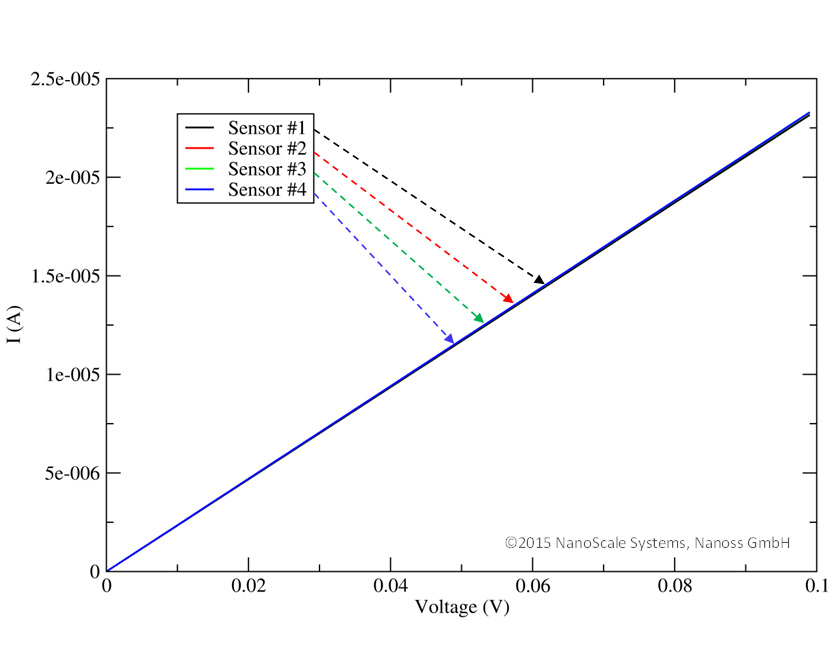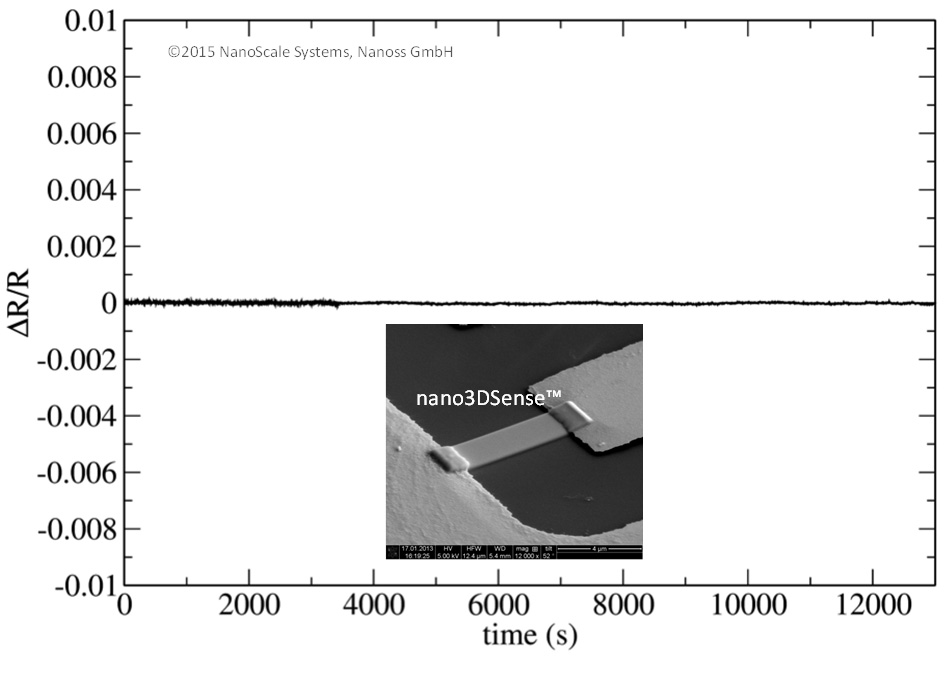A New Leaf: Radically New Measuring Principle for Medical Sensors
For the first time, a radically new sensor principle for visionary medical applications is used for the nano3DSense: Nano crystalline composite materials, so-called nanocomposites, are the ideal basis for elaborate measuring tasks of mechanical parameters (pressure, force etc.): With highest possible accuracy and reliability on the micro- and nanoscale.
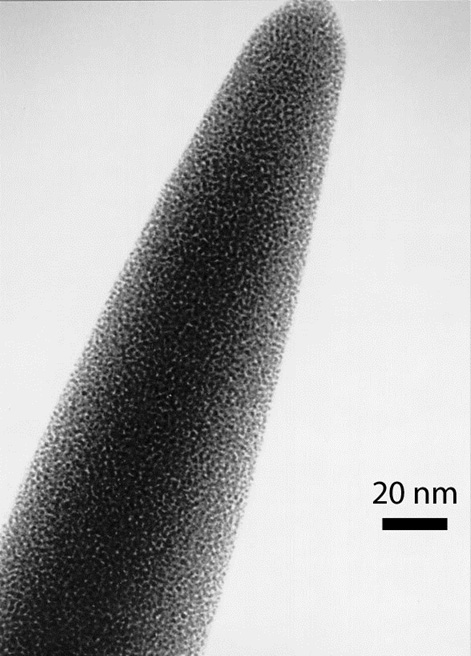
Nano crystalline sensor composite material (nanocomposite) produced using nano3DSense 3D nanoprinting
nano3DSense – Sensors Designed from Scratch for Highest Possible Accuracy
A MEMS fabricated micro substrate, such as the pressure diaphragm or a micro force transducer (e.g. beam or cantilever) on a chip (see graphic below) can be mechanically bent or stretched in many different ways: e.g. by applying pressure or a tiny force on the surface of the substrate. A diverse and complex distribution of forces on different locations on the substrate can occur.
Thanks to nano3DSense, these forces can now be measured with highest possible precision where they actually originate from. 3D printing on the true nanoscale allows to place the sensors on the substrate where perturbations exactly stem from. With nanometer precision everywhere on the substrate, applicable for almost all materials dedicated for medical purposes. A revolutionary simple measuring principle guarantees easy and flexible design & implementation of the sensor into your medical application using standard measurement technology.
Sensors that Make a Difference
On the basis of the adaptive 3D nanoprinting approach, the substrate (e.g. pressure or force transducer) material or shape can be chosen freely without any limitations in design or material properties, allowing for unparalleled flexibility and custom-tailored solutions for your medical application. Besides silicon, many other materials e.g. steel (such as biocompatible titanium), glass, oxydes, plastic or polymers, such as polymide can be used effortlessly for elaborate measuring tasks. Even tiny substrates in the range of 100 µm (Mircrons) and below for the minimally invasive use of catheters or medical implants can be equipped easily with high-performance sensors.
Thanks to the small size, used for the nano3DSense sensor, ultra-low power consumption and efficiency is warranted. This way the sensor quickly and individually adapts to your medical application and is ready for use in every possible measuring encounter.
Read more:
nano3DSense at a glance
Top-Down vs. Bottom-Up
Nano 3D-Printer
How the nano3DSense sensor works
> Features
FAQ: nano3DSense

